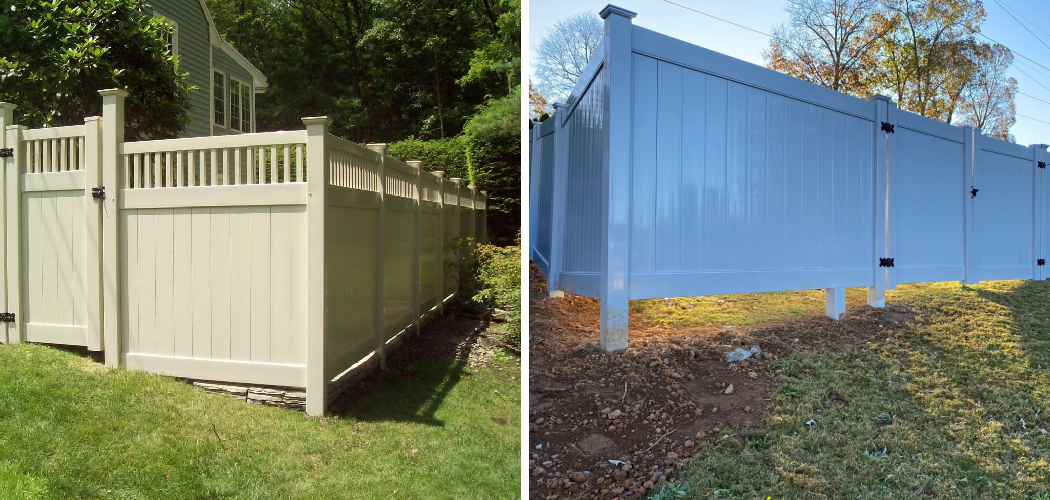There is a gap under your vinyl fence; what do you do? You have a few options to fill the gap and make sure your fence stays in good condition. In this blog post, we will discuss those options about how to fill gap under vinyl fence and how to go about completing them. Read on for more information!
If you have a vinyl fence, sooner or later, you will have to fill the gap under the fence. This is a guide on how to do just that. There are many different ways to do this, but we will cover the easiest and most common ways. Keep in mind that the method you use will depend on the size of
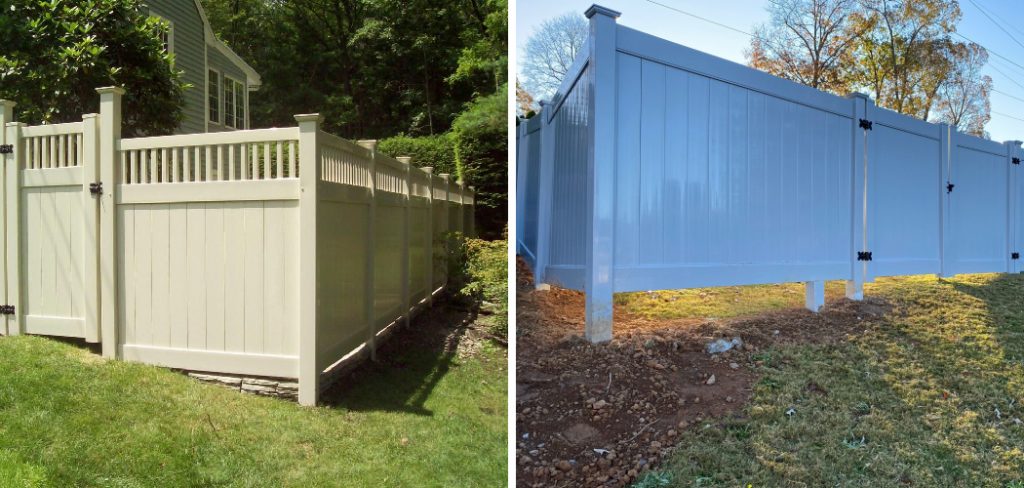
Why Filling the Gap Under the Vinyl Fence is Important?
There are many reasons why it is important to fill the gap under your vinyl fence. Such as:
1. Prevent Weeds From Growing
Filling the gap can prevent weed growth, which can ultimately reduce garden maintenance and keep your yard looking neat and tidy. This is a great reason to fill the gap, especially if you have a garden that is close to your fence.
2. Prevent Animals From Digging Under
Filling the gap can also prevent animals, such as neighborhood cats or small rodents, from digging under and potentially damaging your fence or causing other issues in your yard. So if you are an animal lover or are just trying to protect your property, filling the gap can be a great solution.
3. Improve the Overall Look of the Fence
Filling the gap can also improve the overall look of your fence by creating a seamless and uniform appearance. So if you want your vinyl fence to be visually appealing, filling the gap is a must. If you want to give a good look at your fence, it is a great idea.
4. Protect the Foundation of the Fence
Filling the gap can also help protect the foundation of your fence from erosion and shifting. So if you want your fence to have a longer lifespan, filling the gap is important. So it is very important to make sure the gap is filled properly.
5. Improve Security and Privacy
Filling the gap under your vinyl fence can also improve security and privacy for your property. This is because there will no longer be any gaps for potential intruders to peek through or slip through, making it harder for them to access your yard.
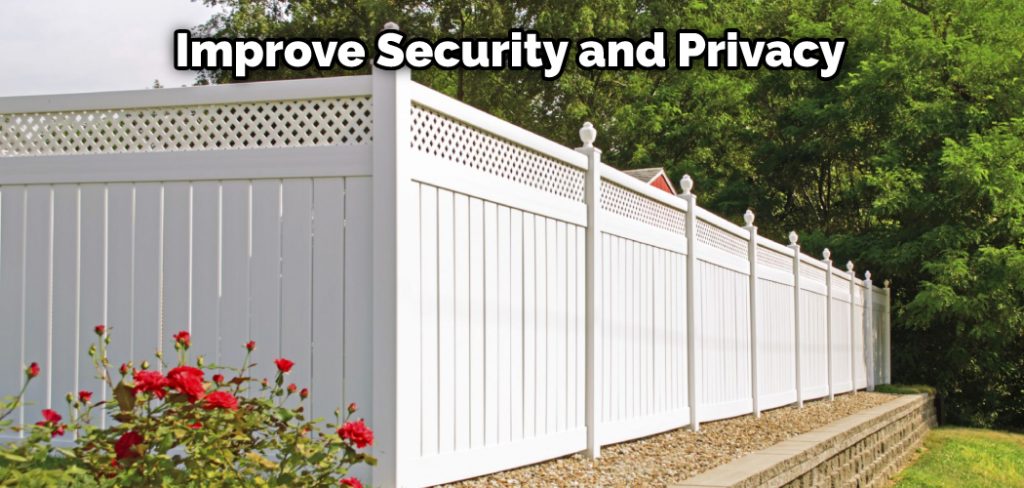
Things You will need to Fill Gap Under Vinyl Fence
- Landscape fabric or plastic sheeting
- Rocks or gravel
- Utility knife
- Hammer
- Stakes
- Shovel
How to Fill Gap Under Vinyl Fence in 6 Steps
1. Measure and Mark the Desired Filling Area:
Use a measuring tape to measure the length and width of the gap underneath your vinyl fence. Mark the desired filling area with chalk or markers. Make sure the area is large enough for the filler material to fully cover and support the fence.
2. Choose Filling Material
There are several options for filling the gap under your vinyl fences, such as gravel, dirt, concrete mix, or stepping stones. Choose a material that best suits your needs and the look you’re going for. But you have to be careful when using gravel or stepping stones because they can easily shift and move.
3. Prepare the Filling Material
Before filling the gap, make sure to level out any uneven ground and remove any debris or weeds. If using gravel, spread a layer of landscaping fabric to prevent weed growth before adding the filling material. It can be a little bit tricky to evenly spread small gravel, so using a landscaping rake can help create a smooth surface.
4. Fill in Gap
Using a shovel, fill in the gap with your chosen material, making sure to compact it as you go. It is very important to compact the material to prevent sinking or shifting in the future. So you have to be extra diligent when filling the gap.
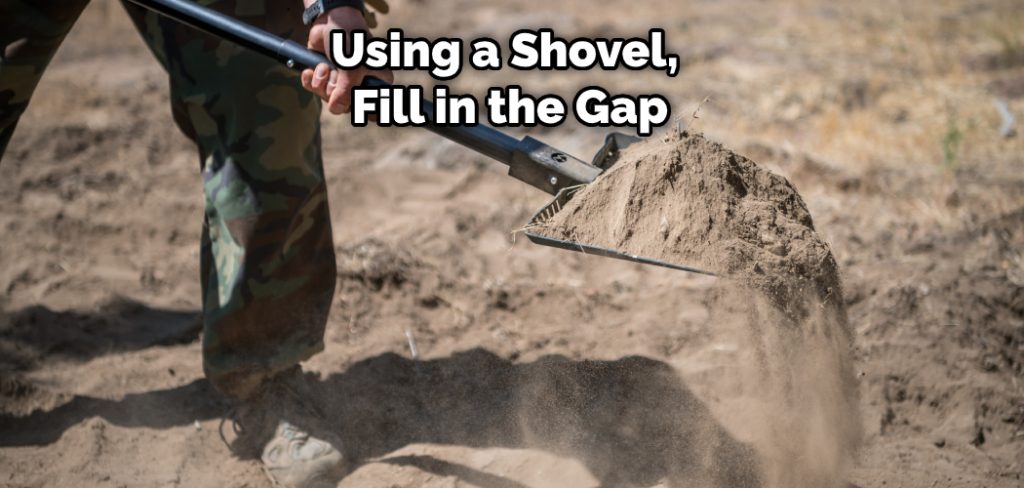
5. Finish Up
Once the gap is filled, use a hand tamper or heavy object to fully compact and level out the filling material. Add any finishing touches, such as plants or mulch for added aesthetic appeal. Well, finishing can be a little bit harder but it is worth it to have a clean and professional-looking fence.
6. Maintain Filling Material
To keep the filled gap looking nice, periodically check for any weeds or debris and remove it as needed. Re-level and compact the filling material as necessary. With proper maintenance, your vinyl fence will have a seamless and polished look for years to come.
Some Essential Tips and Tricks About How to Fill Gap Under Vinyl Fence
1. Choose a Good Filler Material
While some may choose dirt or gravel to fill in the gap, these materials can easily wash away or shift over time. Instead, opt for a filler material like cement mix or landscaping fabric. So it is very important to choose a good filler material.
2. Use a Tamping Tool
In order to ensure that the filler material is evenly distributed and compacted, use a tamping tool or even a piece of wood to press down firmly on the material. This will prevent any shifting or unevenness in the future.
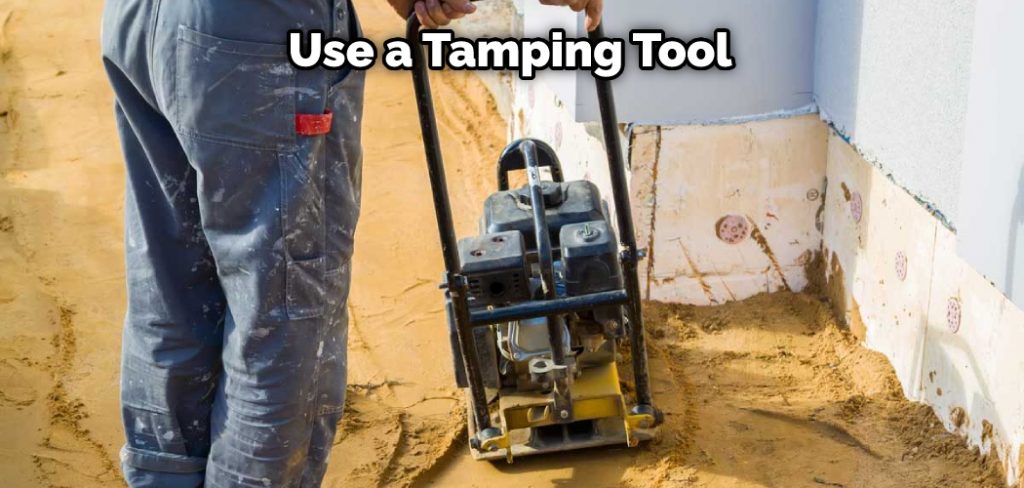
3. Trim Excess Filler Material
Once the filler material has been tamped down, use a utility knife or scissors to trim away any excess materials that may be sticking out above the fence line. This will ensure a clean and seamless appearance.
4. Add additional layers as needed
Depending on the size of the gap, you may need to add multiple layers of filler material in order to fill it in. Allow each layer to dry before adding the next one, and continue tamping down each layer until the gap is filled to your desired level.
Following these tips and tricks will ensure that your vinyl fence looks seamless and professionally done.
Precautions You Must Take to Fill Gap Under Vinyl Fence
Before filling in the gap under your vinyl fence, it is important to take certain precautions to ensure the success and longevity of your project.
1. Make Sure the Ground Underneath
Before filling in the gap, it is crucial to make sure that the ground underneath is leveled and compact. This will ensure that the filled-in area does not sink or shift over time.
2. Use Proper Filler Material
It is important to use filler material that is compatible with vinyl fencing. Some suitable options include gravel, rocks, or concrete mix. Avoid using dirt or soil, as these may settle and lead to unevenness in the future.
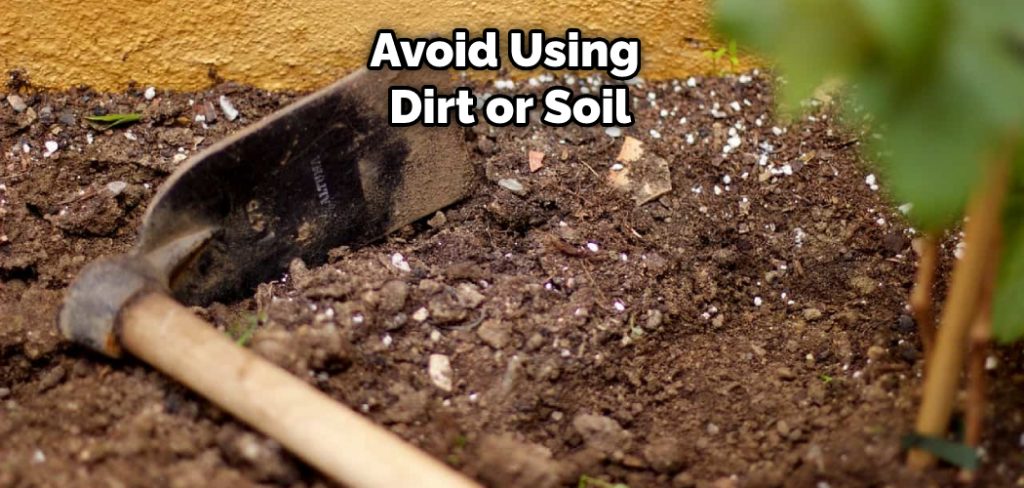
3. Double Check for Underground Wires or Pipes
Before filling in the gap, make sure to check for any underground wires or pipes that may be present. This can prevent damage and potential hazards.
By taking these precautions, you can ensure that the gap under your vinyl fence is filled properly and securely.
You Can Visit To How to Build a Wooden Ramp Over Steps
Frequently Asked Questions
How Far Off the Ground Should a Vinyl Fence Be?
The bottom of a vinyl fence should be at least 6 inches off the ground to prevent pooling water and potential erosion. Any gaps under the fence can also be filled with gravel or concrete to further prevent these issues.
How Many Years Does Vinyl Fencing Last?
On average, vinyl fencing can last up to 20 years with proper maintenance and cleaning. However, some vinyl fences have been known to last much longer, even up to 50 years or more.
Do Vinyl Fences Break Easily?
Vinyl fences can be prone to cracking or breaking in extreme weather conditions, such as hail or high winds. However, vinyl is a durable material, and with proper installation and maintenance, a vinyl fence should not easily break under normal conditions.
Conclusion
Filling the gap under your vinyl fence is an important part of maintenance. By following these simple steps, You will know how to fill gap under vinyl fence and you can ensure that your fence looks great for years to come. Thanks for reading!
Applying these simple tips will help you fill the gap under your vinyl fence quickly and easily. Be sure to take into account the height of your fence when choosing the right material for the job, and always allow for proper drainage to avoid water damage. With a little time and effort, you can have a neat and tidy yard that is both safe and stylish.

